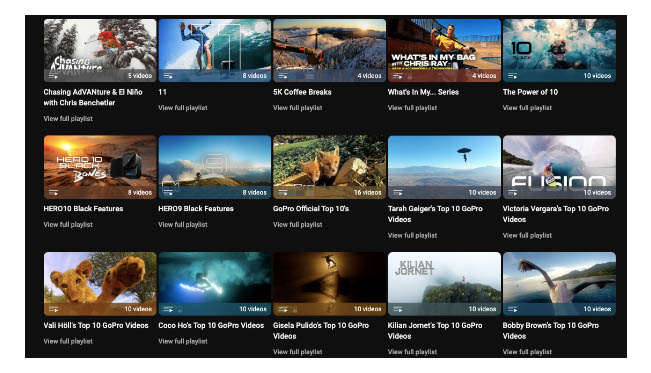In today’s digital era of marketing, video marketing has become an essential and powerful tool for businesses of all sizes to reach their target audiences and achieve their marketing goals. With the rise of platforms like YouTube, TikTok, and Instagram and their features like shorts and reels, video content has proven to be a powerful tool for engaging audiences, promoting products or services, and building brand awareness. By creating and distributing high-quality videos, businesses can increase brand awareness, generate leads, and drive sales.

However, creating effective video marketing campaigns is not always easy. It requires careful planning, execution, and promotion. In this article, we will discuss the key aspects of video marketing, including video production techniques, video SEO, and utilizing video on social media platforms.
Video Production Techniques
The first step in creating a compelling video marketing campaign that can deliver a message effectively is to make high-quality videos. This means using the right equipment, hiring the right talent, and following best practices for video production.
Here are some tips for producing effective video marketing campaigns:
- Plan your video content: Before diving into production, it’s essential to have a clear plan in mind. Define your goals, target audience, key messages, and desired outcomes. Create a storyboard or script to guide your filming process, ensuring a well-structured and coherent video.
- Use high-quality equipment. This doesn’t mean you need to spend a fortune on the latest and greatest gear, but you do need to use equipment that will produce good-looking videos.
- Hire the right talent. If you’re not a video producer yourself, you’ll need to hire someone who is. Look for someone with experience in creating videos for marketing purposes.
- Use engaging visuals: Visual appeal is key to capturing and retaining viewers’ attention. Incorporate visually appealing elements such as vibrant colors, appealing graphics, animations, or b-roll footage. Use text overlays or subtitles to enhance understanding, especially when sound is not available or optional.
- Keep it concise: In today’s fast-paced digital world, attention spans are shorter than ever. Keep your videos concise and to the point. Aim for a video length that aligns with your goals and platforms (e.g., shorter videos for social media, longer videos for tutorials or in-depth explanations).
- Optimize audio quality: Poor audio can quickly turn off viewers, so ensure your videos have clear and high-quality sound. Invest in a good microphone and test the audio levels before shooting. Remove background noise during post-production to create a seamless listening experience.
- Incorporate storytelling: Humans are wired for storytelling, and leveraging this element in your videos can create a strong emotional connection with your audience. Craft a narrative that resonates with your viewers, evokes emotions, and aligns with your brand values
To illustrate these techniques, let’s take a look at Starbucks India’s “#ItStartsWithYourName” viral video campaign. Their video, shot on a limited budget, showcased their brand’s personality, used the theme effectively, and captured attention with a concise yet engaging script. By planning meticulously and incorporating engaging visuals, they were able to generate millions of views and increase their customer base significantly.

Video SEO
Creating outstanding videos is only half the battle. To maximize the reach and impact of your videos, you need to optimize them for search engines to reach to potential viewers. Here are some video SEO best practices to consider:
- Use relevant keywords in your video titles and descriptions.
- Add closed captions to your videos.
- Promote your videos on social media and other online channels.
An excellent example of effective video SEO is Tasty, BuzzFeed’s popular food channel Tasty. They optimize their video titles, descriptions, and tags with relevant keywords, making it easier for users to find their content through search engines. By implementing closed captions, they also cater to a wider audience and improve their search visibility.

Utilizing Video on Social Media Platforms
Social media platforms are a great way to distribute your videos and reach a wider audience. It also provides the opportunity to interact with the customers. While using social media to promote marketing videos, there are a few things that are needed to keep in mind:
- Create eye-catching video thumbnails.
- Write compelling video descriptions.
- Use relevant hashtags.
- Schedule your videos to be published at times when your target audience is most likely to be online.
Here are some insights and best practices for utilizing video on popular social media platforms:
- YouTube: As the second-largest search engine, YouTube offers immense potential for video marketing. Create a branded YouTube channel, optimize your videos for search, and engage with your audience through comments and community features. Collaborate with influencers or cross-promote your videos on relevant channels to expand your reach.
- Instagram: With its visually-oriented nature, Instagram is an ideal platform for sharing short and visually appealing videos. Leverage Instagram Stories, IGTV, or Reels to showcase behind-the-scenes footage, product demonstrations, or user-generated content. Use relevant hashtags and engaging captions to enhance discoverability and encourage interactions.
- Facebook: Native video content on Facebook tends to perform well in the news feed. Upload your videos directly to Facebook, rather than sharing YouTube or external links. Craft attention-grabbing thumbnails and headlines to entice users to click and watch your videos. Engage with your audience by replying to comments and incorporating interactive elements like polls or quizzes.
- TikTok: Known for its short-form, engaging videos, TikTok has gained immense popularity. Leverage trending challenges or viral content formats to increase your visibility. Engage with the TikTok community through duets, collaborations, and relevant hashtags. Keep your videos authentic, fun, and aligned with your target audience’s interests.
- LinkedIn: While traditionally known as a professional networking platform, LinkedIn has evolved to incorporate video content. Share industry insights, thought leadership, or educational videos to establish authority and engage with professionals in your niche. Use LinkedIn’s native video upload feature and craft attention-grabbing headlines to capture your audience’s attention.
One notable example of effective video utilization on social media is GoPro’s YouTube channel.

They share user-generated content showcasing thrilling adventures and breathtaking footage captured with their cameras. By curating engaging videos and building a community of passionate users, GoPro has become synonymous with action-packed videography.
Additional Insights and Best Practices
In addition to the tips mentioned above, here are some additional insights and best practices for effective video marketing:
- Use video to tell stories. People love to watch stories, so use video to tell your brand’s story in a compelling and engaging way.
- Make your videos informative and educational. People are always looking for ways to learn new things, so create videos that provide value and information.
- Make your videos entertaining. People are more likely to watch and share videos that are entertaining and fun.
- Use video to build relationships with your customers. Video is a great way to connect with your customers on a personal level and build relationships.
- Use video to drive sales. Videos can be used to generate leads, increase website traffic, and drive sales.
Conclusion
Video marketing is a powerful tool that can help businesses for capturing attention, engaging audiences, and promoting a brand. By incorporating the video production techniques discussed in this article, optimizing for video SEO, and effectively utilizing social media platforms, a brand can create impactful videos that resonate with their target audience and help to grow business.
A note to remember that successful video marketing requires experimentation, monitoring analytics, and adapting strategies based on the insights gained. Staying informed about emerging trends and technologies, and always prioritize delivering value to the viewers. With the right combination of creativity, optimization, and strategic planning, a video marketing effort can yield remarkable results for a business or personal brand.